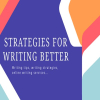
Efficiency in the writing process is something important that should work towards. And it’s not impossible to achieve. We use some unique techniques to improve speed and content quality over the years. In this article,we will show you how to do the same. Here’s what you can expect.
- Publish better content more frequently.
- Write faster without compromising quality.
- Take on larger writing projects and complete them with plenty of time to spare.
If you put these techniques to work, you should be able to share at least an hour of writing time for every article that you write. Let’s jump right in.
1. Recognize the importance of good writing.
Stress the importance of clear, thoughtful writing. Best efforts in communicating on paper, as well as comments and progress on the writing for proper passage statements.
2.Craft a mission statement for your article.
Before begin the writing, it helps to know what the ultimate goal of your article is. What transformation would you like readers to go through? What informational nuggets would you like them to walk away with? Beginning with the goal in mind is important for several reasons.
- You can reverse engineer your article to get your readers to that ultimate goal.
- It will be way easier to come up with action steps to substantiate your post.
- It keeps you from adding new information all of a sudden that might not help you reach your goal.
- Your mission statement is not something that you have to fuss over.
It can be done by simply looking at your topic and deciding what you want readers to learn. For example, in this post, We want you to walk away with strategies that you can use to write a quality article in less time. That’s my mission statement. From that, we can know that every sentence written should help in saving time while still writing quality words.
3. Create an article outline
It’s simple. When you know what you’re going to write about, the words fall into place easier than if you were coming up with ideas on the fly. A good outline gives you a holistic view of how your article will come together. Aim to be as thorough as possible. The research process is key to ensuring that you have as much detail as possible. This way, you can knock out each point without having to divert your attention away from writing. The days of switching between ten different tabs for reference will be over. In turn, you’ll be minimising distractions, which will save you so much time. See how detailed this is? That’s what you want to strive for.
4. Write your article.
Have you ever heard the saying, “all good writing is rewriting?” It suggests that the purpose of a draft is to get the words out. Perfection comes with the editing process. We agree with this,
right?
but we also think, you should strive for a usable first draft. This way, your draft isn’t so far off from what your article should be that editing requires a complete overhaul. That would be counterproductive. With that said, here are some tips for writing a quality first draft quickly.
- Use brief sentences.
- Use bullet points and numbered lists.
- Connect the dots for the reader logically.
- Use transition phrases.
5. Proofread your article
“Write first, edit later.” This age-old rule sounds simple, but it works. When you edit while you write, you’re simply creating resistance to your flow. The constant writing and rewriting zaps all the fun from the process. Besides, writing and editing require different skills. They also require different mental scripts. I’ll explain. The story you tell yourself when you write is different from when you edit. Writing is about letting words out. Editing is largely about eliminating unnecessary words. Writing requires flow. Editing requires discipline.
Do you see the difference?
We also recommend editing on a smaller screen. Why? When you have long horizontal lines to read, you tend to skip words. As a result, you could miss errors. Narrower content width means your eyes don’t have much screen real estate to wander off. You pick up errors quickly and more efficiently.
Pro Tip:
Structure your work week so that you designate specific days for each of these tasks. For example, you can choose to write a batch of outlines on Mondays, research all your articles on Tuesdays, and write on Wednesdays. Sounds monotonous? It’s actually not. You can still do other tasks these days. This is simply a way to streamline your days so your work week is more productive.





